Every game in the Metal Gear series, ranked
We celebrate 30 years of tactical espionage action and cardboard boxes
A legacy of virtuous missions

2017 marks the 30th anniversary of the Metal Gear series; a sprawling web of military operations, government conspiracies, bipedal nuclear battlemechs, and tactical espionage action. From its humble beginnings on the now-ancient Japanese MSX2 computer following a young, lone-wolf US soldier Solid Snake as he infiltrates the secret military base Outer Heaven, Metal Gear has blossomed into a empire of its own, its story spanning generations of supersoldiers and over a century of modern American history and politics across nearly two dozen games. And of course, not all Metal Gears are created equal.
While Metal Gear will forever be synonymous with its creator and lead architect Hideo Kojima, it's also much bigger than one man; a series that has spiraled out over 30 years into countless spin-offs and side-entries, each one forming a piece of a much larger story. Some of them are far more important to the overall canon - or simply more fun - than the others, though, so we've assembled our crew of Metal Gear obsessives to rank the best Metal Gear games that made it to the West. If you're looking to see how your favorite entry stacks up, or are simply looking for a good place to start your mission to take down the Patriots, look no further.
Honorable Mention: Metal Gear Online
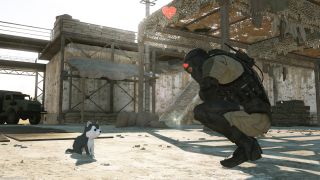
Metal Gear Online isn't technically a stand-alone game (at least outside of Japan, anyway), but it deserves special mention here for taking the series' stealth mechanics and expertly placing them in a multiplayer context. Beginning as an additional mode in the Subsistence update to Snake Eater, MGO has evolved over the years, taking cues from MGS3, MGS4 and, eventually, MGS5 to create one of the strangest competitive modes ever devised.
Players square off against each other in rounds of team-based deathmatches, using a variety of stealthy gear and high-powered weapons to face off against one another. MGO2 - found in MGS4 - expanded on the basics by integrating the story's Sons of the Patriots network of nanomachines, allowing you to hack into other players to keep track of them on the field. MGO3 - tucked inside The Phantom Pain - allows players to gain points by attaching Fulton balloons to their foes. They're only captured when the balloon rockets into the sky, though, so players with quick reflexes can save them by shooting them down. Support for these modes are fleeting, each one only lasting a few years before Konami inevitably shuts the servers down - so enjoy MGO3's brazen weirdness now while you can. David Roberts
20. Metal Gear Solid Touch
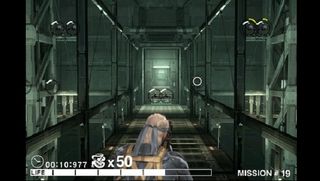
Release date: March 18, 2009 (NA/EU)
Platform: iOS
There are ways to convert popular console franchises to mobile devices without sacrificing what makes those games so special, but everything about Metal Gear Solid Touch screams soulless cash grab. Loosely following the plot of MGS4, Touch takes the series' trademark open-ended stealth action and converts it into a bland, uninspired shooting gallery. Enemy soldiers appear on each stage, and you swipe your finger on the screen to aim and tap to fire. Occasionally you have to zoom in to shoot a distant enemy or switch to your rocket launcher to take out a lumbering Gekko. That's about it.
Everything about MGS Touch feels cheap - characters and environments look like they've been poorly Photoshopped out of MGS4, enemies fall down in three jarring frames of animation when shot, and the gameplay is far too basic to be engaging. Unless you're so desperate that you absolutely have to have a Metal Gear fix available at all times, it's best to pretend MGS Touch doesn't exist.
Sign up to the GamesRadar+ Newsletter
Weekly digests, tales from the communities you love, and more
Best bit: Deleting this garbage app from your phone David Roberts
19. Snake's Revenge

Release date: April 1990 (NA) / March 26, 1992 (EU)
Platform: NES
Snake's Revenge isn't low on this list because it's a bad game. As a follow-up to the NES version of Metal Gear, it's actually surprisingly decent, providing more of the same stealth gameplay with an all new story. It even has a few interesting gameplay twists of its own, as you can actually interrogate enemy commanders for information by hitting them with a canister of truth gas.
But Snake's Revenge isn't really a Metal Gear game. It was made specifically for North America and Europe because of the popularity of the first game, and series creator Hideo Kojima had no knowledge that it was even being worked on until well into its development. Kojima began work on a true sequel, Metal Gear 2: Solid Snake, which released exclusively in Japan six months after Snake's Revenge. Kojima's game went on to become series canon, while Snake's Revenge became apocrypha - an interesting curiosity, but nothing more.
Best bit: Actually getting to fight a Metal Gear in an NES game David Roberts
18. Metal Gear Acid
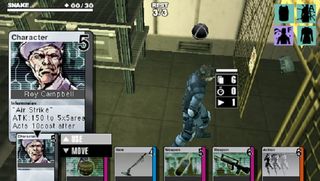
Release date: March 22, 2005 (NA) / September 1, 2005 (EU)
Platform: PSP
If you follow a franchise long enough, you're bound to see strange spin-offs into completely new genres. While we haven't had a Metal Gear Soccer game (yet), Konami converted the classic stealth series into a turn-based strategy/collectable card game called Metal Gear Acid for the launch of the PSP. The most surprising thing? Despite its flaws, it actually works.
Acid takes the sneaking, shooting, and cardboard-box wearing action found in the core titles, and puts them all into the most bizarre board game you've ever played. Actions and items are relegated to cards that you can earn while you play, and Metal Gear Acid is as much about building your deck for each level as it is about figuring out the opportune moment to play your cards. Its pacing isn't for everyone, its story isn't canon, and many of its biggest issues end up getting fixed in the sequel, but Metal Gear Acid is still an interesting experiment.
Best bit: A pair of murderous twin marionettes who hijack an airliner with an important political figure onboard, and their twisted, depraved dialog David Roberts
17. Metal Gear Acid 2
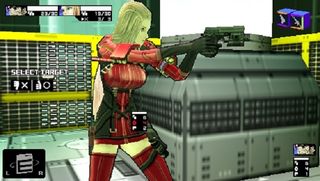
Release date: March 21, 2006 (NA) / May 19, 2006 (EU)
Platform: PSP
Metal Gear Acid 2 takes the unique card-battling board game introduced in the first game, and makes everything better. The controls are more refined, turns are faster-paced, and your turn no longer ends when you open doors - a huge improvement from the first game. There are also way more cards to collect, with over 500 this time around, each one representing a different weapon, item, or moment from the storied franchise.
The additions don't stop there, though. An arena mode lets you fight against iconic bosses like Liquid Snake with Acid's unique turn-based system, allowing you to earn points outside of the story to buy new cards. And improved tutorials and guides explain and inform you of Acid's various systems, and are available for perusal at any moment.
Best bit: Playing the game with the included Solid Eye, a cardboard contraption you can affix to your PSP for playing the game in 3D David Roberts
16. Metal Gear (NES)
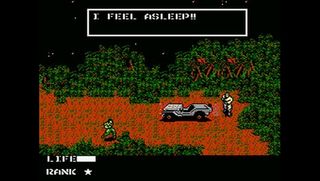
Release date: June 1988 (NA) / 1989 (EU)
Platform: NES
Metal Gear on the NES is ostensibly supposed to be the same game as Metal Gear on MSX2. It is not. The game opens in some kind of bizarre jungle sequence divorced from the rest of the game with Snake parachuting in with a bunch of other people who are never seen or heard from again. Enemies endlessly respawn making it all but impossible to hide from many of them when you re-enter a screen you’ve already explored. The sound effects are grating on Nintendo’s otherwise excellent machine, there’s no ability to save, the English script is cryptic at best. Metal Gear, the titular superweapon, doesn’t even appear in the freaking game.
Under its mountain of flaws, though, the inherent fun of the Metal Gear series still shines. Even in this mauled state, hiding from enemies and amassing an increasingly versatile armory of infiltration gear is still a damn good time. NES Metal Gear isn’t much fun all these years later, but it’s an important historical artifact in the series’ thorny history.
Best bit: When you inevitably play Metal Gear for MSX2 after playing this and say to yourself, “Ohhhhhh, now I get what this was supposed to feel like.” Anthony John Agnello
15. Metal Gear Solid: Portable Ops Plus & 14. Metal Gear Solid: Portable Ops
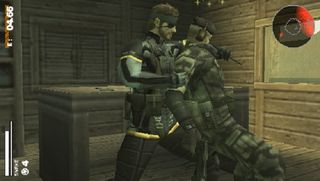
Release date: Portable Ops: December 5, 2006 (NA) / May 25, 2007 (EU); Portable Ops Plus: November 13, 2007 (NA) / May 20, 2008 (EU)
Platform: PSP
The first game developed by the now dissolved Kojima Productions, Metal Gear Solid Portable Ops marks the very first time a canonical entry has appeared on a handheld - kind of. Set six years after the events of Snake Eater, Portable Ops follows the exploits of Big Boss and his attempts to build the beginnings of a soldier's paradise. Since Kojima was only a producer on Portable Ops, though, its importance to the overall storyline is debatable.
Portable Ops does, however, introduce the neat ability to find and recruit soldiers in the field - an idea expanded on by Peace Walker and more fully fleshed out in The Phantom Pain. The controls aren't great (curse the PSP's lack of a second analog stick), but it does a decent job of taking the modern 3D Metal Gear style and making it playable on the go. Just be careful: if you want the story, get Portable Ops, as PO Plus is a stand-alone expansion that rips out the story entirely.
Best bit: Slowly building a cadre of loyal soldiers by stuffing them in the back of a truck. David Roberts
13. Metal Gear 2: Solid Snake

Release Date: July 20, 1990 (Japan)
Platform: MSX2
The true, canonical sequel to Metal Gear makes the unofficial Snake's Revenge look primitive by comparison. The music is better, the animations are more fluid, and the story is deeper and more complex - which makes it all the more surprising that the game wouldn't officially leave its native Japan for nearly 16 years. Thankfully, the Western release of Metal Gear Solid 3: Subsistence finally gave us a chance to experience this lost chapter in the series' history.
Metal Gear 2 didn't just improve the enemy AI or give Snake a radar and the ability to crawl into tight spots; it's also the first entry that forces the player to break the fourth wall and scan their instruction manual for tap codes and other clues to find new codec frequencies. If not for some unfortunate backtracking, Metal Gear 2 would be the perfect 2D entry in the series.
Best bit: Improvising a flamethrower out of a lighter and aerosol can to fight Big Boss at the end David Roberts
12. Metal Gear
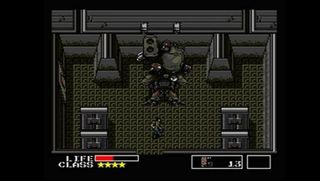
Release date: July 13, 1987 (Japan)
Platform: MSX2
Metal Gear, in its pure form on the MSX2 computer, had a tortured road to release. Originally only available in Japan and Europe, it finally got a global release in 2005 as part of the Metal Gear Solid 3: Subsistence special edition and later as part of the Metal Gear Solid HD Collection. It’s this version of the game, with its loading times smoothed out, a fresh script edit, and an Easy mode to help with the burden of the original’s punishing difficulty, that best preserves Hideo Kojima’s original vision for a video game that’s equal parts freaky B-movie and stealth exercise.
The action is rudimentary - even simple maneuvers like crawling wouldn’t be introduced until Metal Gear 2 - but the basics and theatricality were already in place. Crazy bosses, frenemies like Grey Fox, and the tortured relationship between Solid Snake and Big Boss all started here in a taxing, unusual adventure.
Best bit: Surviving long enough to get your first security card and feel like you’re starting to figure out how this weirdo game is supposed to actually play. Anthony John Agnello
11. Metal Gear Solid GBC (aka Metal Gear: Ghost Babel)
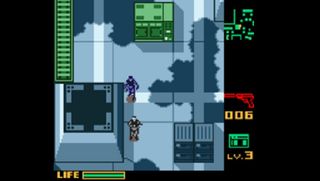
Release date: April 24, 2000 (NA) / May 5, 2000 (EU)
Platform: Game Boy Color
It doesn't matter that the Game Boy Color version of Metal Gear Solid (known as Ghost Babel in Japan) isn't canon, taking place on an alternate timeline seven years after the events of the original Metal Gear. It doesn't matter that the Game Boy Color isn't that much more powerful than the NES and sports as many buttons. Somehow, Metal Gear Solid on the Game Boy Color manages to blend the retro stylings of the MSX2 entries with the modern improvements made by the classic PlayStation entry, culminating in the greatest 2D Metal Gear game ever made.
Despite its small stature, Metal Gear Solid on the Game Boy Color packs in a deep, mature storyline (while still being rated 'E', no less), following Snake as he battles a separatist force in Central Africa and listens to (or reads, in this case) reams of codec dialog. It's still amazing what the developers were able to pack into such a small cartridge, how nothing was sacrificed to make a seemingly simple-looking game with all the complexity of its bigger console brothers. Don't write it off just because it's on a Game Boy - this Metal Gear is one of the best.
Best bit: Realizing the 'Fogger' is actually Snake's trademark cigarettes given the ol' Nintendo sanitation treatment David Roberts

Sam Loveridge is the Global Editor-in-Chief of GamesRadar, and joined the team in August 2017. Sam came to GamesRadar after working at TrustedReviews, Digital Spy, and Fandom, following the completion of an MA in Journalism. In her time, she's also had appearances on The Guardian, BBC, and more. Her experience has seen her cover console and PC games, along with gaming hardware, for a decade, and for GamesRadar, she's in charge of the site's overall direction, managing the team, and making sure it's the best it can be. Her gaming passions lie with weird simulation games, big open-world RPGs, and beautifully crafted indies. She plays across all platforms, and specializes in titles like Pokemon, Assassin's Creed, The Sims, and more. Basically, she loves all games that aren't sports or fighting titles! In her spare time, Sam likes to live like Stardew Valley by cooking and baking, growing vegetables, and enjoying life in the countryside.

Fallout 4's big next-gen patch isn't going over well, especially on PC: "I had very low expectations but this is MUCH less than I expected"

30 years after he created Hellboy, Mike Mignola is creating a whole new folklore-inspired universe

Destiny 2 is un-sunsetting every gun in the MMO with The Final Shape's massive Power changes – but Bungie says "we have no recovery mechanism" for deleted ones
Most Popular



